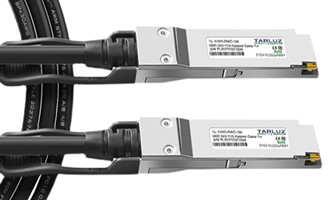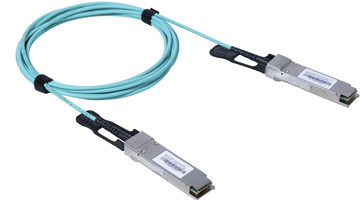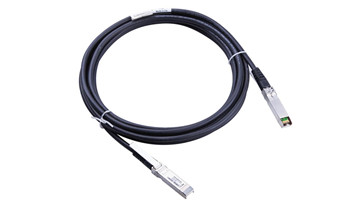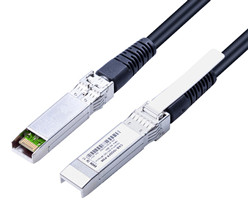
DAC high-speed cable (Direct Attach Cable) is a low-cost short-distance connection solution that replaces optical modules. Both ends of the high-speed cable have a module cable assembly, the port cannot be replaced, and the module head and the copper cable cannot be separated. However, compared with Active Optical Cables, the connector modules on high-speed cables do not have expensive optical lasers and other electronic components, which greatly saves cost and power consumption in short-distance applications.

1. Classification of DAC high-speed cables
【10G SFP+ to SFP+ High Speed Cable】

DAC Passive Cable Assembly, SFP+ to SFP+, Twinax, 10gig, Multi-Source Agreement (MSA) Encoded
The 10G SFP+ to SFP+ DAC uses a passive twinaxial cable assembly and connects directly to the SFP+ module, featuring high density, low power, low cost, and low latency
↓ It includes the following types
10G SFP+ passive copper core high-speed cable (DAC)
10G SFP+ Active Copper Core High Speed Cable (ACC)
10G SFP+ Active Optical Cable (AOC)
They are suitable for network connections within a rack and between adjacent racks and are extremely cost-effective. The SFP+ passive copper core high-speed cable provides a direct electrical interface between the two ends of the corresponding cable, and the connection distance can reach 12m. However, due to the heavy weight of the cable and considering the problem of signal integrity, its length of use is limited. Generally limited to between 7m and 10m.
【40G QSFP+ to QSFP+ high-speed cable】

A 40G high-speed cable (DAC) refers to a connecting cable with optical transceivers installed at both ends, enabling 40Gbps data transmission.
↓ It includes the following types
1. 40G QSFP+ to QSFP+DAC
It is composed of two 40G QSFP+ optical fiber transceivers and copper core wires. This high-speed cable can be used to realize the interconnection of existing 40G QSFP+ ports to 40G QSFP+ ports, generally only within a distance of 7m.
2. 40GQSFP+ to 4*SFP+DAC
It is composed of 1 40G QSFP+ optical transceiver, copper core wire and 4 10G SFP+ optical transceivers. One end is 40G QSFP+ interface, which meets the requirements of SFF-8436, and the other end is 4 10G SFP+ interfaces, which meets the requirements of SFF-8432. It is mainly used to realize the interconnection between 40G and 10G equipment (NIC/HBA/CNA, switch equipment and server). According to the customer's demand for the length of the cables at both ends, it can generally only be done within a distance of 7m, which is currently the most economical. Simple implementation of switch port conversion.
3. 40GQSFP+ to 4XFP+DAC
It is composed of one 40G QSFP+ optical transceiver, copper core wire and four 10G XFP optical transceivers. Since the XFP fiber optic transceiver does not have the DAC copper cable standard, the signal compensation given by the device is low, and the loss of the cable itself is very large. It can only be used for short-distance transmission, generally within a distance of 2m.
【25G SFP28 to SFP28 High Speed Cable】

DAC Passive Cable Assembly, SFP28 to SFP28, Twinax, 25gig, Multi-Source Agreement (MSA) Encoded
The 25G SFP28 to SFP28 DAC can provide customers with 25G high-bandwidth data interconnection capability, which conforms to the IEEE P802.3by Ethernet standard and SFF-8402 SFP28, and is widely used in data center or supercomputing center system scenarios.
【100G QSFP28 to QSFP28 high-speed cable】
100G QSFP28 to QSFP28 DAC can provide customers with 100G high-bandwidth data interconnection capability, providing 4 duplex channels, each channel can support up to 25Gb/s operating rate, and the aggregation bandwidth is 100Gb/s, in line with the SFF-8436 specification, used in Connection between devices with QSFP28 ports.
【100G QSFP28 to 4*SFP28 high-speed cable】
One end of the 100G QSFP28 to 4 SFP28 DAC is a 100G QSFP28 interface, and the other end is 4 25G SFP28 interfaces, which can provide customers with 100G high-bandwidth data interconnection capabilities, in line with SFF-8665/SFF-8679, IEEE 802.3bj and InfinibandEDR standards, It is also widely used in data center or supercomputing center system scenarios.


